Start Licensing’s Ian Downes picks his highlights from this week’s UK Toy Fair at Olympia.
Like many of my colleagues from the licensing world, I spent part of the week at the London Toy Fair. The fair is a natural draw for licensing people as licensing runs through the toy sector like Blackpool through seaside rock.
Licensed properties are a core part of the contemporary toy industry, firing up NPD and bolstering sales for many companies. Of course licensing is a double edged sword for many with an element of risk associated especially when launching new properties, while an over reliance on licences can stifle creativity.
A measure of the link between licensing and toys can be seen by the Toy Fair selections made by journalist Peter Jenkinson in the Metro paper today. Highlighting tech, the toys highlighted included a number of licensed products including a QR code enhanced Star Wars lightsabre and an ‘interactive’ Batman figurine. Other brands featured included Pac Man and Rubik’s Cube. The Toy Fair is a good boost for the licensing industry.
At Olympia during Toy Fair you are never far away from a licensed property or a licensing professional. So it is always interesting to see how licensing is being used and what properties are bubbling up or boiling over. Aisle asides can be very informative guides to current form in the licensing world. By nature licensing people are optimistic, but I think the mood these days is optimism tempered with realism. I think the overarching view is that times are still challenging and everyone is concerned about retail placement, but there is a growing recognition that a well managed licence and licensing programme can still drive success and as industry we are still able to point to properties like Peppa Pig as ones with staying power.
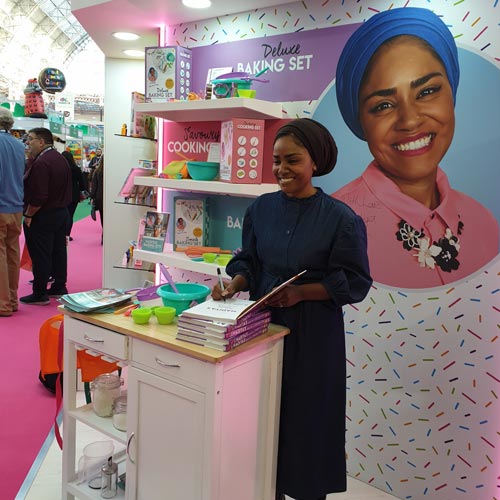
From my own perspective I was delighted that our client Nadiya Hussain took time out of her schedule to visit the show in support of licensee Wilton Bradley.
Nadiya popped into Olympia literally the day after returning from a busy filming trip in the United States. In itself that was a big tick in the box for licensing and toys.
Nadiya has developed a range of baking kits with Wilton Bradley. They have been developed as ‘real’ baking kits rather than toy or role-play ones. The kits include accessories and recipe cards sourced from one of Nadiya’s cookbooks. I mention this range as a good example of a toy company being prepared to support a licensed brand with bespoke development work and with a vision for the range. It is a good example of how licensing can enhance a category and create a point of difference, but also a further reminder that we all have to be mindful of product development when developing licensed ranges. A licence will help sell a range, but the range itself has to be good.
Nadiya’s trip to the Toy Fair was a success, generating great PR and also giving her a further insight into the work that licensees like Wilton Bradley have to undertake to get products into the retail market.
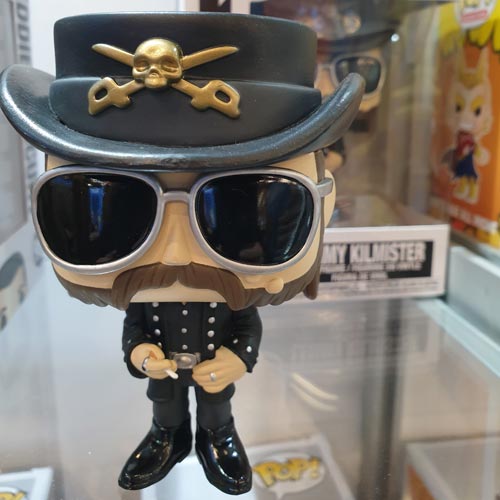
One of the companies which has proactively used licensing to build and grow its business is Funko. It must be the toy company with the largest amount of licensing agreements currently. A fair old admin challenge! The business is built around licensing and pop culture.
It would be easy to sit back and let the licences do all the work, but Funko has been proactive in developing new categories in its core area – for example sports and music. A highlight for me was the Lemmy from Motörhead Pop Vinyl. Further confirmation that well chosen music licences can work well.
Further to this, Funko has created some great new lines such as apparel and Advent Calendars with some clever packaging and format ideas. T-shirts are sold in faux cereal boxes for example, while it has made a big push into the Advent Calendar market with a range of calendars featuring collectable figurines. Funko is a really good example of a licensee engaging with the licensing community well and also an example of how the licensing model can work well in new product categories if there is a commitment to design, marketing and trade sell in.
On a personal note it was really exciting to see the Aardman range made up of Wallace & Gromit and Shaun the Sheep. After 28 years in licensing, it is reassuring that seeing a new product on a Toy Fair stand can still be uplifting!
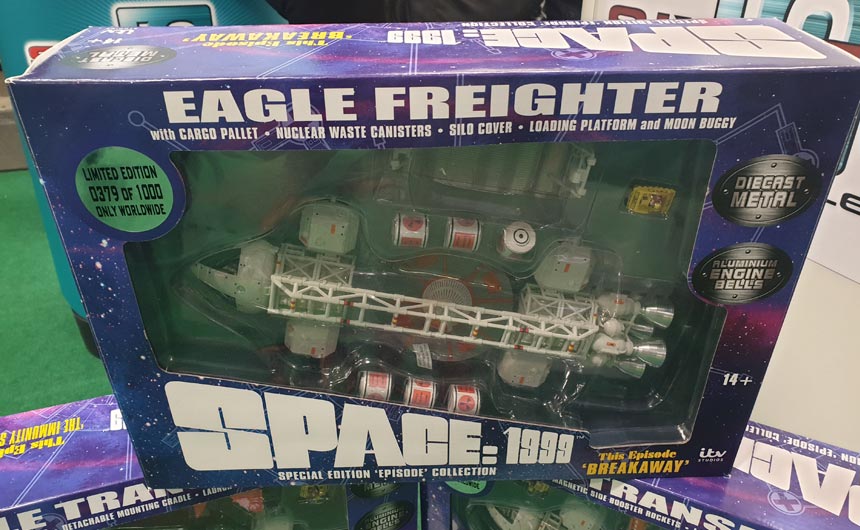
The rise of online selling and digital marketing has opened the door to companies to tap into other parts of the fan market and fan culture. It is getting easier and I guess cheaper to reach ‘significant niche’ consumer groups and fans.
ITV Ventures is working with Sixteen Collectibles on a range of collectables based on the cult TV series Space 1999. The range includes figurines, replica props and vehicles. The product is high spec and ‘on point’. It includes sound effects and dialogue clips making the product really on brand for fans.
Traditionally products like these have been sold through specialist stores, magazines and conventions. Of course, these channels are still relevant but have been enhanced by the use of online marketing and selling. A well developed digital marketing campaign can help a cult property reach its audience quickly and cost effectively. It is good to see ITV nurturing relationships with specialist licensees and in turn good to see a licensee like Sixteen 12 Collectibles work hard at getting it right.
This should encourage other IP owners that have archives that there is potential in developing campaigns around ‘vintage properties’, but there has to be some effort put into sourcing reference material, clearing rights and helping licensees find routes to market. I think this is also an area that could see more start up businesses using licensing to drive business growth and also use crowdfunding platforms as a way of gaining momentum.
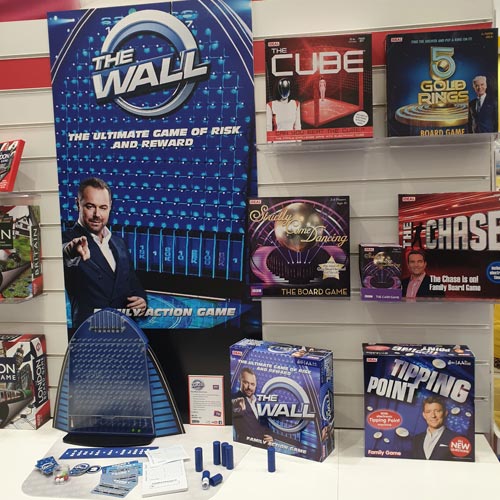
Sticking with TV programming and formats, I was impressed by John Adams‘ commitment to board games based on TV quiz shows. It has developed a very sold and focused portfolio of boxed board games featuring gameshows such as The Cube, The Wall, The Chase and Tipping Point. It is a good area to develop expertise in for John Adams and it can become a ‘go to’ supplier and licensee in the category. It is also a good format retail-wise as it crosses over from toy to gift and I can imagine retailers such as bookstores would be interested in this kind of product.
However, rather like Space 1999 for TV and production companies to succeed in this category they should have done ‘The Homework’. Rights need to be pre-cleared including visuals, sounds and other IP such as question formats.
In challenging times it is important to be market ready and to make the licensing process as smooth as possible.
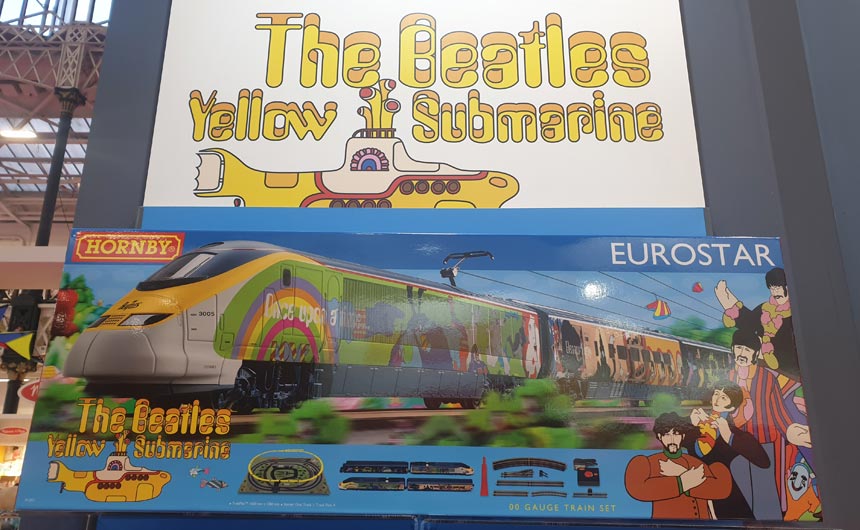
I was also impressed by the product range on the Hornby stand. The Hornby brand is 100 years old this year and it must be a constant challenge to refresh things. Hornby also owns and distributes the Corgi, Scalextric and Airfix brands. I believe Scalextric could challenge Funko for the number of licences held at one time record. A Scalextric racing car can often require five or six individual licences to get off the starting grid in licensing terms.
Hornby has embraced licensing and use licences to reach new and non-traditional consumers and retailers, but are also respectful of its traditional markets. A highlight on the stand this year were a number of train sets developed under The Beatles Yellow Submarine licence. These products will have global appeal and will also help Hornby travel into some new retail accounts. I believe the Yellow Submarine connection with trains centres on a Eurostar promotional campaign from some years ago. I am sure the backstory would make a good question on The Chase.
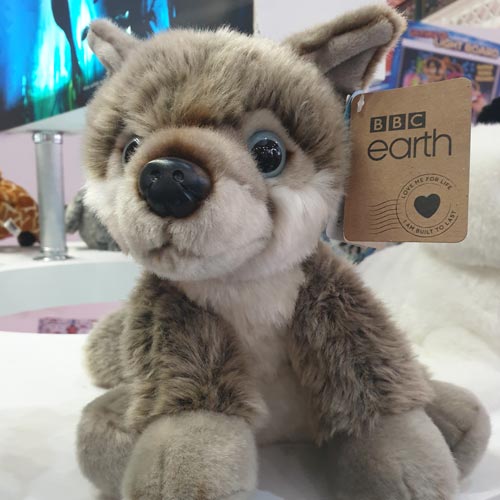
My final highlight from Olympia was found on the Posh Paws stand. I am sure it is not alone in looking at ways it can make its plush products more sustainable and, of course, sustainability in toys is a big topic at the moment in general terms. Posh Paws has a licence with the BBC for BBC Earth (I think this connects into shows like Blue Planet).
It has launched a new line of plush that is made with a stuffing that is made from recycled plastic bottles and food containers. The Siberian Husky Puppy that caught my eye is filled with approximately nine plastic bottles worth of stuffing. I am no expert but this seems like progress to me. Indeed Posh Paws admitted that following retailer meetings it is going to make further changes to the product to improve its sustainability. This was good to hear and good to see.
The product looked great, it is a good licence to work with but, of course, it was great to see a company trying to change and improve particularly one in a highly competitive category.
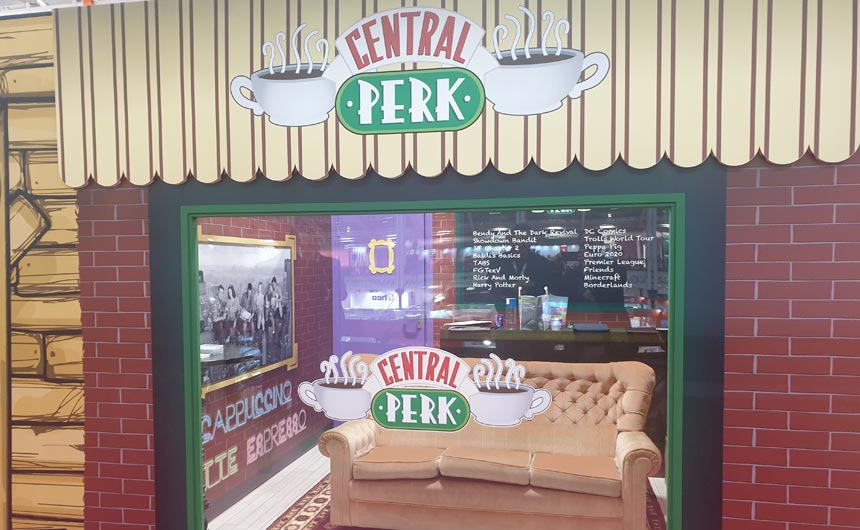
Finally a big round of applause to Click Distribution which won my vote for Best Stand at Toy Fair – it launched a range of Friends products by recreating Central Perk. You could have a meeting and I guess grab a coffee in its Central Perk.
This was brand immersion in action and a real show stopper of a stand. I imagine there was a lot of social media shares of the stand. Equally I am sure there were some good orders taken as Friends is a contemporary classic and a property that appeals to a lot of retailers and consumers.
What better way to sell it than let customers experience a real Friends moment!
Ian Downes runs Start Licensing, an independent brand licensing agency. His Twitter handle is @startlicensing – he would welcome your suggestions for what to look out for.































